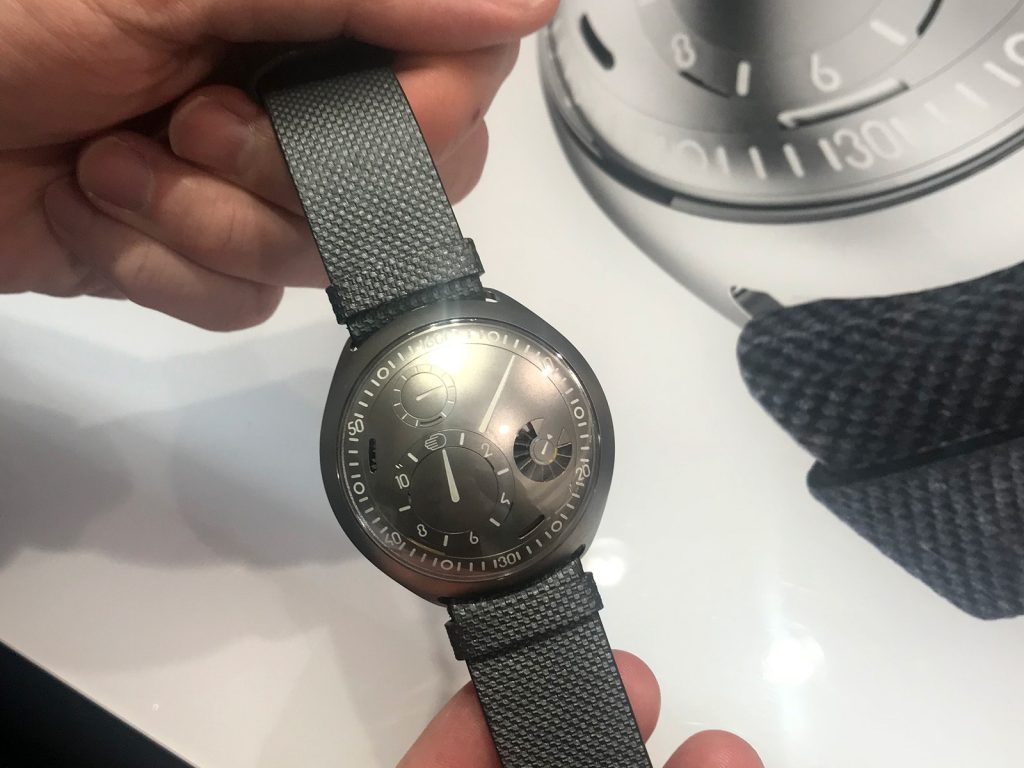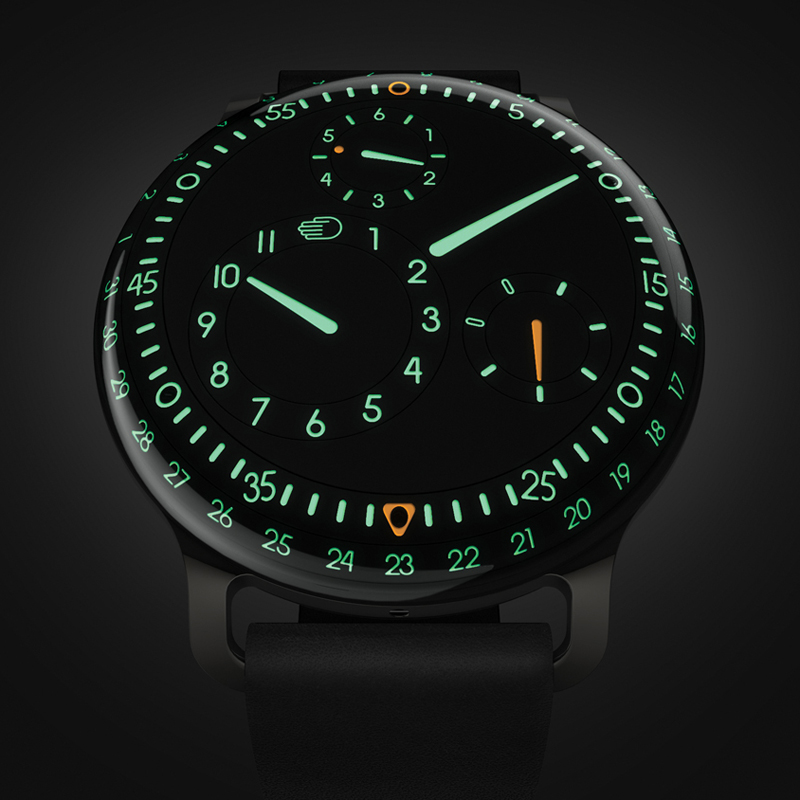Mechanical Yet iPhone-Connected, The Ressence Type 2 e-Crown Concept Watch
A new development in the technology and artistry composing fine timepieces

“It’s more cyborg than it is hybrid,” Benoît Mintiens, founder and designer at Ressence, explains to us at this year’s Salon International de la Haute Horlogerie Genève (SIHH). Here, Ressence has unveiled their latest concept watch and it falls in line with their history of almost unimaginable creativity. As for Mintiens’ statement, the brand new Ressence Type 2 e-Crown Concept Watch is a fully mechanical automatic watch, that connects with Bluetooth to an iPhone app. It does this to set (or reset) the time without the use of a crown—a component that the brand notes has been necessary in watchmaking for about 170 years now. The Ressence app tracks two time zones, which it sends to the watch hands with precision down to the second. Accompanying this advancement are all sorts of visual flourishes, including gills that open when electricity is under 50% in the watch. And while it is a concept now, they’re aiming to get it to market by September.
According to Mintiens they began to develop this concept a little more than a year ago. “The philosophy behind it,” he explains, “is that we try to get the best of both worlds: the mechanical watch world with its empathy and relatability, and the electronic world with its precision and consumer trust. Combining these two worlds successfully is what we have tried to achieve.” Many watch buyers understand the history and value of an automatic timepiece. Some also learn the woes of maintaining the time. Mintiens does not want people to take out their phones to check the time. Thus, the Type 2 e-Crown is truly self-regulating and self-setting. You simply tap the watch dial to wake the system and have it connect and update.

The future-forward technology does not interrupt the traditional mechanical system. In fact, if it were removed the watch would work just fine as a traditional (as traditional as Ressence can be considered) automatic watch. There’s a small electronics board inside powered by a generator that gains (and stores) energy from the barrel connected to the automatic movement—and through sunlight if necessary (photovoltaic sensors are hidden behind the aforementioned gills, referred to officially as micro-shutters). The concept is entirely the brand’s, but they did seek an outside team to develop and produce the electronic component.

Nest founder Tony Fadell acted as a guide along the way. “Ressence is the rare watchmaker that puts people first, then develops the mechanics around that,” he says. “It changed the dial layout to make it more readable, then figured out how to make the movement to support that. It developed the first liquid-filled mechanical watch to enhance readability from any angle, then figured out how to separate the oil from the movement. And now it’s created the first mechanical watch that knows what time it is, without compromising the integrity of fine watchmaking.” Many of these exact developments that brought Fadell on board have also appealed to watch lovers around the world (ourselves included).

“If you look at the earliest mechanical watches, they were horribly inaccurate,” Fadell continues. “So a lot of work went into new ‘technology’ like balance springs and escapements. But they were big bulky things. So then a lot of ‘innovation’ happened to make them smaller, thinner—and you could wear this time-keeper on your wrist. The crown to set and wind the watch didn’t come until much later. Then came automatic winding in the 70s… So, this is an evolution. The mechanical watch shouldn’t stop evolving.”
It’s important to mention that when we held the working concept piece, both the size and weight were quite smaller than expected. Inside, there’s an all‐new generation of the brand’s famed “ROCS,” or Ressence Orbital Convex System. All the Grade-5 titanium discs used here are mounted on jewel micro-ball bearings. This has resulted in a much slimmer timepiece. This is as much a brand development as the additional technology they’ve incorporated within.
Second from last image by David Graver, all other images courtesy of Ressence












